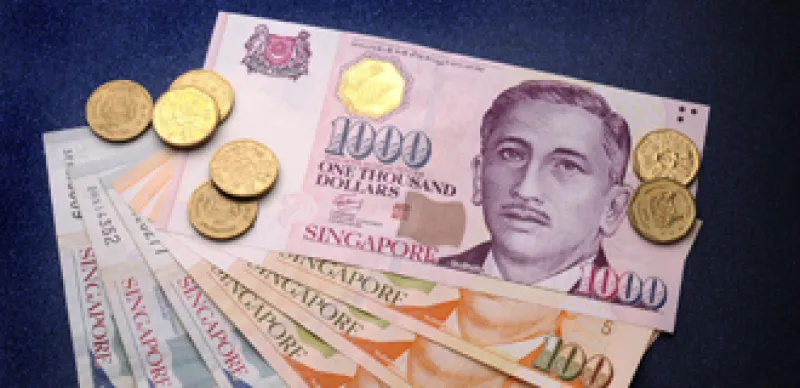It’s official. The Monetary Authority of Singapore said it would "re-center the exchange rate policy band upwards” in its semi-annual policy review, held Thursday (April 14). The Singapore dollar hit a record high of 1.2453 against the U.S. dollar following the news.
Foreign exchange analysts had expected Singapore to announce a tightening of monetary policy to contain inflation; it was just a question of whether the authority would take the more drastic step of changing the width of the band in which the currency is allowed to fluctuate. Singapore’s consumer price index rose 5.2 percent in the first two months of 2011.
Also boosting the Singapore dollar are a whopping GDP growth of 23.5 percent in the first quarter of this year over the previous three months, a current account surplus of 17 percent of GDP, and its peg to the Chinese yuan so that investors can use it as a proxy. The currency is now in its ninth year of continuous appreciation. “I can’t expect that appreciation to continue for another 10 years,” says Mirza Baig, an FX strategist at Deutsche Bank in Singapore. “But if you look at the global context, the Singapore dollar is not expensive.” He calls it “one of the few AAA sovereigns left in the world at a time when the market doesn’t treat the US as an AAA and there is concern some European countries might lose that rating.”
Apart from monetary policies aimed at rising inflation, economic signals in Singapore and most of its Southeast Asian neighbors, especially Malaysia, point to continued currency growth in the year ahead. The Malaysian ringgit has declined from a 13-year high of 3.0190 on April 1, but is expected to continue benefitting from high oil prices. “Its rise is partly about oil but also about strong fundamentals,” says Thomas Harr, head of Asia currency strategy at Standard Chartered Bank in Singapore. Harr expects the ringgit to reach 2.95 to the US dollar by year-end.
Jonathan Cavenagh, a currency strategist at Westpac in Singapore, says the main risk to the ringgit would be a weakening of the equity market due to falling export demand from Japan. A deterioration in the fiscal balance caused by higher oil prices would be more or less neutralized in the near term by increased tax revenues from Petronas, the national oil company, says Rahul Bajoria, a regional economist at Barclays Capital in Singapore. Bajoria says if oil rises much higher, the Malaysian government would probably speed up the implementation of its new economic model, which calls for cuts in consumer subsidies, so that consumers would pay higher pump prices. But even that would not bring the economy or the currency down significantly. “The new economic model promotes privatization,” says Bajoria, “and there is high enough retail participation in the local stock market that consumers would see positive wealth effects quickly. Higher commodity prices, especially of palm oil, would benefit small plot owners, which would have a cascading impact on consumption.”
The rising cost of labor in China is a further-flung factor pushing up Southeast Asia’s currencies. “We’ve already seen as much as a 40 percent increase in the minimum wage in Beijing,” says Bajoria. He expects labor costs in China to rise over the next few years. As a result, the costs of intermediate products and raw materials would rise, and that would further drive inflation in Singapore, which relies heavily on Chinese imports and is a large supplier of intermediate goods. The impact would not be as high on Indonesia, Malaysia, Thailand or the Philippines, which are not as dependent on trade with China. But other Asian currencies that are likely to rise with China’s wages, he says, are those of South Korea and the Taiwan, both of which are buy a great many raw materials from the mainland.





